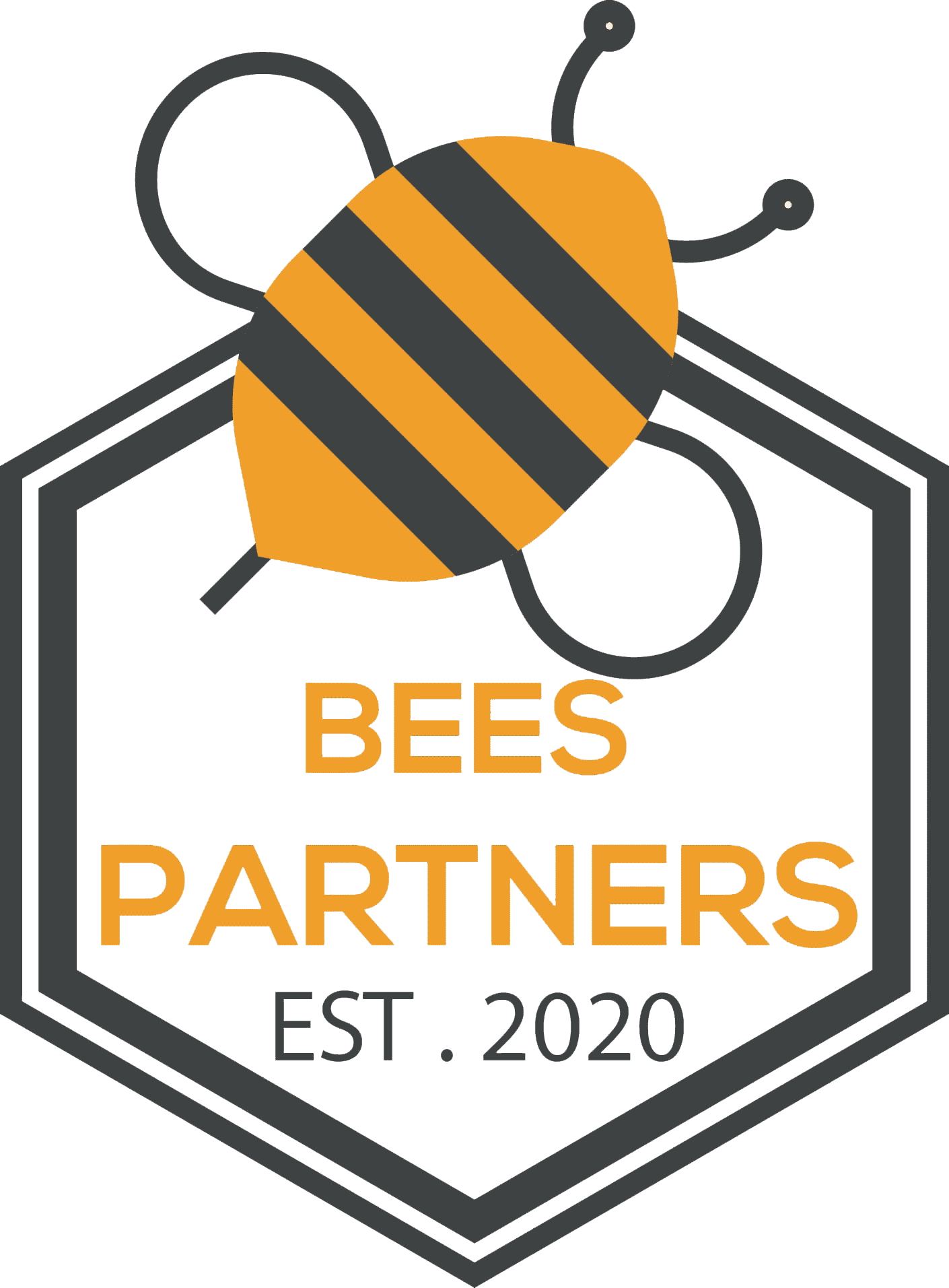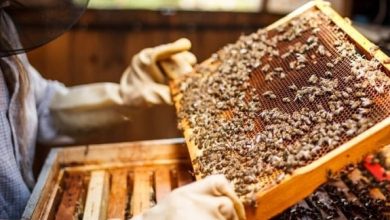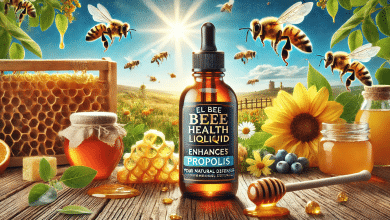Setting Honey Prices in the Local Market
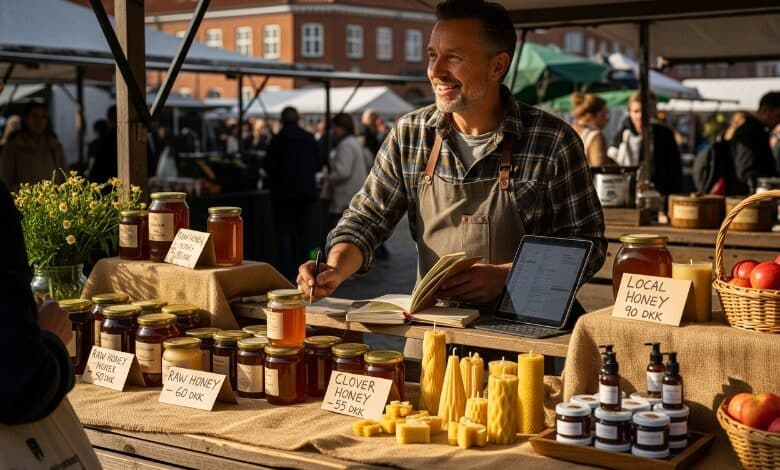
Setting Honey Price the Local Market, it becomes evident that various factors play a crucial role in determining honey prices. Understanding these elements is key for honey producers, retailers, and consumers alike.
Factors Affecting Honey Prices
Several interconnected factors influence honey prices, ultimately impacting buying and selling strategies:
- Production Costs: The expenses related to beekeeping – such as equipment, labor, and feed – can directly affect pricing. For instance, if a local beekeeper struggles with higher expenses due to poor weather conditions affecting flower availability, honey prices may rise to compensate.
- Quality and Flavor Profiles: Local honey can vary significantly in taste and quality. Unique flavors, driven by the regions bees forage in, can demand higher prices. People tend to pay more for organic or raw honey, as they seek quality over quantity.
- Market Demand and Supply: The age-old principles of demand and supply undoubtedly apply here. In a year with a bumper crop, prices may drop as a surplus exists. Conversely, in a year with fewer hives or a bad harvest, prices could spike due to scarcity.
- Local Competition: Understanding neighboring producers’ pricing is essential. Overpricing might lead to losing customers to competitors who offer similar quality at lower prices.
- Seasonality: Honey is often seasonal, and prices may fluctuate throughout the year. For instance, springtime honey may be priced differently than fall honey, based on consumer buying trends and product availability.
Importance of Setting Competitive Prices
Setting competitive prices is vital in the local honey market for several reasons:
- Attracting Customers: Competitive pricing can draw in customers looking for quality products without breaking the bank. A well-priced honey can entice new customers to give local options a try.
- Retaining Market Share: As consumer preferences shift, maintaining reasonable prices ensures that existing customers continue purchasing from local producers rather than moving to alternatives.
- Building Reputation: Consistent and fair pricing contributes to a positive brand image, fostering trust among consumers.
Navigating the local honey market requires keen awareness of these influencing factors and the importance of competitive pricing. By actively studying these elements, sellers can position themselves for success, ensuring that their honey reaches its intended customers effectively.

Contents
- 1 Pricing Strategies
- 2 Market Research and Analysis
- 3 Setting the Right Price
- 4 Communication and Marketing
- 5 Monitoring and Adjusting Prices
- 6 Legal and Ethical Considerations
- 7 How to Sell Honey Locally?
- 8 What Determines the Price of Honey?
- 9 How to Market Local Honey?
- 10 Why is Local Honey More Expensive?
Pricing Strategies
Having a clear understanding of the local honey market and factors affecting pricing sets the foundation for developing effective pricing strategies. This section explores three core approaches: cost-based pricing, competitor-based pricing, and value-based pricing, providing insight into how each can be adapted for honey producers.
Cost-Based Pricing
Cost-based pricing is a straightforward approach that determines prices based primarily on production costs.
- Calculating Costs: Producers tally all costs, including:
- Equipment and tools (hives, protective gear)
- Bee maintenance and health care (medications, feeding)
- Labor costs (time spent managing the hive and harvesting)
- Packaging and distribution expenses
With these figures in hand, honey producers set a price that covers costs and includes a desired profit margin. For example, if a local beekeeper spends $5 per jar for production and packaging, they might price the honey at $8 to ensure a healthy profit.
Competitor-Based Pricing
Another approach is competitor-based pricing, which involves setting prices based on those of similar products offered by local competitors. This strategy can be particularly beneficial in densely populated areas with multiple honey vendors.
- Assessing the Competition: Honey producers should:
- Research local prices for similar honey varieties.
- Analyze factors like quality, packaging, and customer service.
By adjusting their prices to remain competitive, producers ensure they attract price-conscious consumers while still maintaining a reasonable profit margin. For instance, if competing honey jars are priced at $10, a producer could adjust their price to $9.50 to edge out the competition.
Value-Based Pricing
Value-based pricing revolves around the perceived value of the honey product to the consumer rather than just production costs or competitors’ prices.
- Understanding Consumer Perception: Producers must ask themselves:
- What unique qualities does their honey possess?
- Are there health benefits that justify a higher price?
- How does the honey’s flavor distinguish it from others?
For instance, if a local honey producer offers raw, unprocessed honey known for its health benefits and unique flavor, they could successfully price their product higher than competitors, as customers are willing to pay more for quality and specialized products.
Employing the right pricing strategy in the local honey market is essential for balancing profitability and marketability. Producers can experiment with different approaches and discover the best fit for their honey offerings as they refine their pricing strategy over time.

Market Research and Analysis
With an understanding of pricing strategies, the next step is to conduct thorough market research and analysis. This phase is crucial for honing in on consumer preferences, analyzing competitors, and identifying emerging market trends. By gathering and interpreting this information, honey producers can make informed decisions that enhance their market standing.
Studying Consumer Preferences
Understanding what consumers want is key for any business, and honey is no exception. Studying consumer preferences enables producers to align their offerings with the desires of their target market.
- Surveys and Questionnaires: Local honey producers can conduct surveys at farmer’s markets or community events to gather insights directly from consumers. Questions might include:
- What qualities do you look for in honey (e.g., organic, local, flavor)?
- What price range seems reasonable for you?
- Feedback Methods: Leveraging social media platforms can also be beneficial. By encouraging customer reviews and promoting engagement, producers can capture what people love about their honey or what improvements they seek.
In my experience, after sourcing consumer feedback for a small honey business, we learned that many valued transparency in sourcing, which dramatically influenced our marketing strategy.
Analyzing Competitors’ Pricing
A crucial part of market analysis is studying competitors. Understanding their pricing structure unveils valuable insights that can guide adjustments and enhancements in your own pricing strategy.
- Mystery Shopping: Visiting local stores or markets and evaluating the pricing of competitor products will provide firsthand knowledge.
- Price Comparison Tables: Creating tables that list competitor prices, product features, and quality can help identify where you stand in the market.
For example, after analyzing three competitor honey brands, a producer may find a gap in the offerings, such as premium honey products without high-end fancy packaging. This knowledge helps in creating targeted strategies that leverage uniqueness, thus justifying a premium price.
Identifying Market Trends
Staying ahead of the curve involves recognizing broader market trends that may affect honey sales.
- Health Consciousness: As more consumers trend towards healthier living, honey marketed with its health benefits can gain traction. Producers should adjust packaging to highlight features such as high antioxidant levels or its immunity-boosting properties.
- Sustainability: Growing interest in sustainable and responsibly sourced products means that local honey producers emphasizing eco-friendly practices can command higher interest and potentially higher prices.
By staying attuned to consumer preferences, competitor pricing, and evolving market trends, honey producers can refine their business strategy, ensuring they meet customer expectations while navigating competitive landscapes effectively. This dedicated research and analysis effort ultimately enhances their ability to set honey prices that resonate with the market.

Setting the Right Price
Now that honey producers have a solid understanding of market research and analysis, the next critical step is setting the right price. Pricing isn’t merely about covering costs; it requires calculated decisions that consider profit margins, demand fluctuations, and promotional opportunities. Let’s delve into these aspects to ensure producers can effectively price their honey products.
Calculating Profit Margins
Profit margins are the backbone of any sustainable business, including honey production. To calculate a healthy profit margin, producers must first have a clear understanding of all associated costs.
- Breakdown of Expenses:
- Fixed Costs: Rent, utilities, equipment purchase
- Variable Costs: Raw materials, labor, packaging
- Formula for Profit Margin: [ \text{Profit Margin} = \left( \frac{\text{Selling Price} – \text{Cost Price}}{\text{Selling Price}} \right) \times 100 ]
For example, if a jar of honey costs $5 to produce and is sold for $8: [ \text{Profit Margin} = \left( \frac{8 – 5}{8} \right) \times 100 = 62.5\% ]
Understanding these margins helps producers gauge their profitability and set prices that sustain their business while drawing in customers.
Adjusting Prices According to Demand
Pricing should be dynamic, especially in response to demand changes. Seasonal variations often influence honey sales—certain times of the year might see a spike in demand, while others may witness a slump.
- Tactics for Price Adjustment:
- Increase prices during peak seasons when demand is high.
- Consider discounts or bundled offers during off-peak seasons to stimulate sales.
For instance, if spring brings a significant increase in honey demand due to local festivals, a producer can adjust prices slightly higher, capitalizing on the surge while still enticing customers.
Implementing Promotional Pricing Strategies
Promotional pricing is an effective way to boost sales and introduce honey products to new consumers. These strategies can create excitement and urgency, fostering customer purchases.
- Ideas for Promotions:
- Limited-Time Discounts: Consider seasonal promotions—for example, a spring sale on wildflower honey.
- Bundle Offers: Offering a discount on a purchase of multiple jars encourages consumers to buy more.
- Loyalty Programs: Reward repeat customers with exclusive discounts or free products after a certain number of purchases.
In my experience, introducing a ‘Buy Two, Get One Free’ offer during local craft fairs led to a notable increase in sales, as many customers found value in trying various flavors at a lower price point.
By accurately calculating profit margins, adjusting prices according to demand, and creatively implementing promotional strategies, honey producers can effectively set prices that not only cover costs but also resonate well with consumers. This balanced approach to pricing is vital for long-term success in the local honey market.

Communication and Marketing
As honey producers set their prices, the next crucial aspect is effective communication and marketing. How one communicates price changes, creates a perception of value, and promotes unique selling points can significantly impact sales and customer loyalty. Let’s explore these vital components.
Communicating Price Changes Effectively
When it comes to changing prices, transparency is key. Customers appreciate honesty, especially when it comes to why prices may increase or decrease.
- Strategies for Clear Communication:
- Notify Customers in Advance: If possible, share news of upcoming price changes several weeks ahead. A notice in your store or post on social media ensures customers are aware and can plan accordingly.
- Explain the Rationale: Whether it’s due to rising production costs or improving product quality, providing the reasoning behind the adjustment helps customers understand and accept the change.
For instance, when one local honey producer raised prices due to a rise in the cost of organic packaging materials, they took to social media to explain the benefits of this decision. The community responded positively, appreciating the transparency.
Creating Value Perception
Creating a strong value perception is crucial for cultivating customer loyalty. Consumers should feel that they are getting more than just a product—they should feel they are buying an experience or unique benefits.
- Ways to Enhance Value Perception:
- Highlight Quality: Focus on the purity and natural origin of your honey. Use labeling to accentuate traits like “raw” or “locally sourced.”
- Storytelling: Share the story of your honey journey—how you started, passion for beekeeping, and the care that goes into each jar. Customers connect with stories and perceive more value in authentic products.
One local beekeeper often shares heartfelt messages about the bee population’s importance during markets, enhancing their honey’s perceived value by invoking a sense of community responsibility.
Promoting Unique Selling Points
Identifying and promoting your unique selling points (USPs) sets you apart from the competition. Knowing what makes your honey special helps strengthen your brand identity and draw in consumers.
- Examples of Unique Selling Points:
- Flavor Variety: If your honey comes in unique flavors, emphasize these offerings.
- Health Benefits: Promote any associated health benefits, such as high antioxidant content or its use in natural remedies.
- Sustainability Practices: If you engage in eco-friendly practices, shout about them! Consumers are increasingly looking for sustainable products to support.
An example is a community honey producer who specializes in infused honey varieties, such as lavender and chili. By marketing these unique flavors, they attract a broader audience and differentiate their products in a competitive market.
In sum, clear communication of price changes, the creation of value perception, and promotion of unique selling points are essential for honey producers. Effectively blending these elements can strengthen customer relationships and drive sales for the business.

Monitoring and Adjusting Prices
Having established effective communication and marketing strategies, the final step is monitoring and adjusting prices. In a dynamic market like honey, staying vigilant about price performance, being responsive to market fluctuations, and conducting regular price reviews are essential for long-term success.
Monitoring Price Performance
To ensure pricing strategies remain effective, producers must regularly monitor how their prices are performing. This involves tracking sales data and assessing consumer reactions.
- Key Metrics to Track:
- Sales Volume: Analyzing how many jars are sold at different price points can reveal valuable insights.
- Customer Feedback: Collecting feedback, both positive and negative, can help gauge consumer satisfaction regarding prices.
- Comparison with Competitors: Keeping an eye on competitors’ pricing and sales performance can help identify where adjustments might be necessary.
For instance, a honey producer noticed that a slight price decrease led to an increase in sales volume, while a small price increase resulted in a dip. By correlating these insights with external factors, such as seasons or festivals, they refined their approach.
Responding to Market Fluctuations
Markets can be unpredictable, influenced by various external factors. A proactive attitude toward price adjustments is crucial for adapting to these changes.
- Situations to Adjust Prices:
- Economic Conditions: If production costs rise due to inflation, producers may need to adjust prices to maintain profit margins.
- Seasonal Demand: Increased demand during honey season or holidays should prompt considerations for promotional pricing or limited-time offers.
- Consumer Trends: If there is a growing trend towards organic products, this might justify a price adjustment to reflect the higher value consumers place on organic honey.
For instance, when the demand for locally produced honey surged during the pandemic, one local producer seized the opportunity by gradually raising prices while also communicating the quality and health benefits of their product.
Conducting Regular Price Reviews
In an evolving marketplace, regular price reviews are vital to ensuring current pricing strategies remain aligned with business goals and market realities.
- Frequency of Reviews:
- Monthly or quarterly reviews can help honey producers stay ahead of any shifts.
- Seasonal reviews before peak seasons can help adjust prices in anticipation of demand.
During these reviews, producers should assess:
- Production cost changes
- Competitive landscape shifts
- Consumer buying behaviors
One successful honey producer set a schedule to review their pricing every quarter. This commitment ensures timely adaptations, quality assurance, and responsiveness to changing customer needs.
In conclusion, monitoring price performance, responding to market fluctuations, and conducting regular price reviews are vital practices for honey producers. By being proactive and responsive, they can adapt their strategies to not only sustain but also grow their business in a competitive market.

Legal and Ethical Considerations
As honey producers navigate the delicate landscape of pricing strategies, they must also be mindful of legal and ethical considerations. Compliance with pricing regulations, adherence to fair pricing practices, and the need to balance profitability with customer trust are essential for fostering a sustainable business.
Compliance with Pricing Regulations
Navigating legal regulations is critical in today’s marketplace. Honey producers must ensure they comply with local, state, and federal pricing laws to avoid any potential legal implications.
- Essential Regulations to Consider:
- Price Labeling Requirements: Many jurisdictions have specific rules regarding how products should be labeled, especially when it comes to pricing. Producers should ensure that their product labels accurately reflect the price and any additional costs, such as shipping or handling.
- Consumer Protection Laws: It’s important to adhere to laws designed to protect consumers from deceptive pricing practices, such as “false advertising” or hidden fees.
During a farmer’s market event, a fellow honey producer faced a fine because they were unaware of local labeling regulations. This incident highlighted the importance of staying informed about legal requirements in every market where one sells products.
Fair Pricing Practices
Maintaining fair pricing practices is critical to sustainability in the honey business. Fair pricing not only builds a solid reputation but also fosters a sense of community.
- Transparency in Pricing: Communicate openly with consumers about how prices are determined. This includes outlining costs related to production, sourcing, and quality guarantees.
- Avoiding Price Gouging: During times of high demand, such as natural disasters or global events, it’s essential to resist the urge to inflate prices excessively. Fair pricing reinforces ethical business practices and maintains customer loyalty.
An example of this in action can be seen in a local honey vendor who chose to maintain original prices during a peak local event instead of raising prices significantly. This approach endeared them to the community, ultimately leading to increased brand loyalty.
Balancing Profitability and Customer Trust
Striking the right balance between profitability and customer trust is essential for long-term success. While achieving profit is necessary for sustainability, it shouldn’t come at the expense of ethical considerations.
- Building Customer Loyalty: Offering fair prices, coupled with quality products, enhances trust. Customers are more likely to return when they feel valued and respected.
- Engagement: Create open lines of communication with customers. Encourage feedback, respond to concerns, and actively engage with the community through social media or local events.
One honey producer effectively increased profits by hosting bee education workshops, creating meaningful relationships within the community. This approach not only boosted sales but also helped solidify their reputation as a community-focused business.
In summary, honey producers must navigate legal compliance, prioritize fair pricing practices, and balance profitability with customer trust. By being proactive and ethical in their approach, they can create a thriving business that resonates with customers and communities alike.
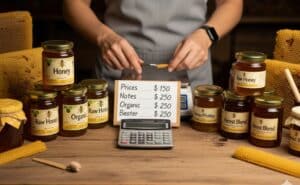
After exploring the intricacies of the local honey market, it’s clear that effective price setting is a multifaceted process. It involves understanding market dynamics, implementing savvy pricing strategies, conducting thorough research, and continually monitoring price impacts. Let’s wrap up with a recap of the essential strategies and some final tips for success.
Recap of Effective Price Setting Strategies
Throughout this discussion, several key strategies have emerged as vital for setting honey prices that benefit both producers and consumers:
- Cost-Based Pricing: Understand your costs thoroughly to ensure profitability while maintaining competitive pricing.
- Competitor-Based Pricing: Regularly analyze competitor prices to stay relevant and attract potential customers.
- Value-Based Pricing: Showcase the unique attributes of your honey, positioning it as a premium product when appropriate.
- Monitoring Performance: Continuously track how pricing strategies are performing, being ready to adjust according to market demand and consumer expectations.
- Transparency and Ethics: Adhere to legal requirements and ethical pricing practices; this fosters customer trust while strengthening brand loyalty.
These strategies work cohesively to ensure that honey producers not only survive in the market but thrive.
Final Tips for Success
To further enhance your honey business, consider these final tips for success:
- Stay Adaptable: The market is ever-changing, so remain prepared to refine your pricing approach based on new consumer trends or economic shifts.
- Engage with Your Community: Build relationships with customers and fellow producers. Attending local events, offering workshops, and sharing your knowledge can strengthen your community ties and enhance sales.
- Invest in Marketing: Don’t underestimate the power of effective marketing to convey your product’s value. Utilize social media, local advertisements, and storytelling to connect with your audience.
- Evaluate Regularly: Schedule routine price reviews to ensure your pricing aligns with current business goals and market conditions. Adjust to stay competitive and responsive.
Remember, effective price setting isn’t static; it requires constant attention and adaptation. By applying these strategies and remaining attuned to both market conditions and customer needs, honey producers can cultivate a successful and sustainable business. The sweet rewards of hard work and thoughtful pricing await those who commit to this path!
How to Sell Honey Locally?
Once honey producers have established their pricing and marketing strategies, the next significant step is effectively selling their honey locally. Selling honey isn’t just about placing jars on a shelf; it requires thoughtful planning, community engagement, and leveraging various sales channels. Here’s a comprehensive guide on how to successfully sell honey in local markets.
Identify Your Target Market
Understanding the target audience is crucial for effective selling. Local honey appeals to different demographics, including:
- Health-Conscious Consumers: Those looking for natural sweeteners and health benefits.
- Foodies and Chefs: Individuals who appreciate high-quality, unique flavors for cooking and baking.
- Families: Parents who prefer local products for their children.
Engaging with your local community and understanding their preferences helps tailor your offerings accordingly. For instance, after talking with friends at potlucks, I discovered a growing interest in raw honey among parents for its health benefits for children.
Choose the Right Sales Channels
There are numerous avenues to sell honey locally. Here are a few effective options to consider:
- Farmers’ Markets: Setting up a booth at local farmers’ markets allows you to connect directly with customers, share your story, and provide samples that can entice purchases.
- Local Grocery Stores: Approach independent grocers or health food stores to see if they’d like to carry your honey. Providing attractive packaging and unique flavors can help secure placements.
- Online Sales: Utilize social media platforms and local community groups to market your honey. An appealing website with an e-commerce section can also reach consumers who prefer online shopping.
- Local Events and Festivals: Participating in community events or food festivals provides excellent exposure. You can offer workshops about the benefits of honey and its various uses, drawing in crowd interest.
Build Relationships and Brand Loyalty
Establishing connections within the community is essential for long-term success:
- Offer Samples and Discounts: Sampling your honey can create memorable experiences. Consider offering discounts for first-time buyers to encourage people to try your product.
- Share Your Story: People love to support local businesses, especially those with compelling stories. Share why you love beekeeping and how your honey is made.
- Engage on Social Media: Regularly post recipes, educational content, and your beekeeping journey on social platforms to resonate with your audience.
By employing these strategies and engaging with your community, selling honey locally can transform into a rewarding venture. Not only will you share your sweet products, but you will also foster meaningful connections and contribute positively to your local economy. Happy selling!
What Determines the Price of Honey?
As local honey producers embark on the journey of selling their sweet products, one of the pivotal questions that arise is: what truly determines the price of honey? Understanding the various factors that influence pricing not only helps producers set appropriate prices but also provides clarity to consumers on what they are paying for. Let’s delve into the key determinants of honey pricing.
Production Costs
First and foremost, the costs associated with producing honey play a significant role in pricing. These costs include:
- Equipment and Supplies: Beekeeping requires special tools such as hives, protective clothing, and harvesting equipment. The initial investment can be substantial, especially for new beekeepers.
- Bee Health and Management: Maintaining healthy bee colonies is vital. Expenses related to medication, feeding, and hive maintenance can add up, influencing the final price.
- Labor Costs: If producers hire workers for harvesting or selling, wages need to be factored into the pricing as well.
For instance, a local beekeeper shared that their production costs rose significantly due to an increase in hive maintenance and environmental factors. This prompted them to evaluate their pricing strategy to ensure sustainability.
Quality and Type of Honey
The type and quality of honey greatly impact its price. Here are some considerations:
- Floral Source: Honey derived from specific flowers can have unique flavors and color profiles, resulting in varying prices. For instance, manuka honey is often priced higher due to its distinct characteristics and health benefits compared to lighter, traditional clover honey.
- Processing Methods: Raw, unfiltered honey typically commands a higher price than processed honey due to its perceived health benefits and purity.
- Organic Certification: Honey that is certified organic often comes with a premium price tag, reflecting the rigorous standards required for organic production.
Market Demand and Competition
Market dynamics also play a vital role. Factors like:
- Consumer Trends: As health trends shift, demand for local or specialty honeys may increase, allowing producers to command higher prices.
- Seasonal Availability: Honey production can be seasonal, affecting supply. An abundant harvest season may lead to lower prices due to increased competition, while a poor harvest season might see prices rise as producers cover their costs.
By analyzing these components—production costs, quality, and market dynamics—honey producers can set prices that reflect the value of their products while remaining competitive. Understanding these factors not only solidifies the pricing strategy but also fosters transparency for consumers, ultimately enhancing their appreciation for the craftsmanship and care that goes into each jar of honey.
How to Market Local Honey?
Once local honey producers have set their prices based on various determinants, the next crucial challenge is effectively marketing their products. Marketing isn’t just about promoting a product; it’s about telling a story, connecting with the community, and showcasing the unique qualities that make local honey special. Here’s a guide to effectively market local honey.
Leverage the Power of Storytelling
One of the most compelling ways to market local honey is through storytelling. People love to know the story behind the products they purchase. Here are some ways to communicate your story:
- Share Your Journey: Talk about your journey into beekeeping, what inspired you, and the challenges you’ve faced. Personal anecdotes resonate well with consumers.
- Highlight Local Sourcing: Emphasize how your honey is harvested from local flowers, connecting it to the environment and community. For example, promoting honey sourced only from a particular region can attract local pride and support.
I remember when I started my honey business, sharing personal experiences about learning beekeeping from my grandfather helped foster a connection with customers who valued tradition and local heritage.
Utilize Eye-Catching Packaging
Packaging can significantly influence a customer’s purchasing decision. Invest time and resources into designing attractive, eco-friendly packaging that reflects the quality of your honey.
- Branding: Create a recognizable brand logo and aesthetic that stands out on store shelves and online platforms.
- Information: Use labels to emphasize key selling points, such as “raw,” “organic,” or “locally sourced.” Effective labeling not only informs but also persuades consumers to choose your product over others.
Embrace Digital Marketing and Social Media
In today’s digital age, a strong online presence is vital for any business. Here’s how to effectively use digital marketing and social media:
- Create a Website: Develop an attractive, easy-to-navigate website where customers can learn more about your honey, purchase online, and find information about local events and fairs.
- Engage on Social Media: Platforms like Instagram and Facebook are fantastic for sharing beautiful images of your honey, behind-the-scenes content, or customer testimonials. Engaging with your audience helps build brand loyalty and community connection.
During my honey sales, I’ve found that sharing recipes that use my honey or hosting Q&A sessions about beekeeping on Instagram generated significant interest and engagement among followers.
Participate in Local Events
Engaging directly with the community can be one of the most effective marketing strategies.
- Farmers’ Markets: Set up a booth at local markets to sell honey directly to consumers. Here, you can offer samples and answer questions, building relationships with customers.
- Workshops and Tastings: Host workshops or tastings to educate the community about the benefits of honey and how to use it in cooking or health remedies.
Marketing local honey requires creativity, genuine storytelling, and community engagement. By employing these strategies, producers can effectively promote their honey products, attracting not just customers, but also building meaningful connections within their community. This, ultimately, leads to sustainable growth and a thriving honey business.
Why is Local Honey More Expensive?
As consumers explore the world of honey, they often notice that local honey tends to carry a higher price tag compared to mass-produced options. Understanding the reasons behind these costs not only enriches the consumer experience but also highlights the value of supporting local producers. Let’s dive into why local honey is more expensive and what factors contribute to these price differences.
Production Methods
Local honey is typically produced using small-scale, artisanal methods that emphasize quality over quantity. Here are a few factors related to production methods that can drive up costs:
- Labor-Intensive Practices: Local beekeepers often put in considerable effort to ensure their honey is pure and carefully harvested. From maintaining healthy bee colonies to hand-bottling, these labor-intensive practices add to the overall cost.
- Natural and Organic Practices: Many local honey producers prioritize organic practices, avoiding synthetic pesticides and antibiotics that can harm bees. This commitment not only sustains bee health but often results in a higher-priced product due to lower yield and more meticulous practices.
I recall my early days as a beekeeper when I spent countless hours tending to my hives and learning about sustainable practices. Though the process was time-consuming, it imbued me with a sense of pride, knowing that my honey was of the highest quality.
Regional Flora and Unique Flavor Profiles
Local honey captures the essence of the geography it comes from. Factors such as:
- Floral Diversity: Honey produced from a variety of local flowers tends to have a unique flavor profile that reflects the region’s ecosystem. For instance, wildflower honey from an area full of blooming flowers delivers distinct tastes that mass-produced honey cannot replicate.
- Limited Availability: Unique regional honeys, such as manuka from New Zealand, can sometimes fetch higher prices due to their rarity and specialized qualities. Local honey can also fluctuate in availability based on seasonal changes, affecting prices.
For instance, I’ve found that my lavender-infused honey, produced during a short blooming season, is particularly sought after and allows me to command a slightly higher price due to its unique flavor and limited availability.
Supporting Local Economies
When consumers purchase local honey, they support their community by:
- Encouraging Sustainable Practices: Local beekeepers often champion sustainable methods that are beneficial for both the environment and the local economy. Investing in local honey is like investing in the preservation of local agriculture.
- Fostering Community Relationships: Buying local promotes relationships between consumers and producers, leading to a better understanding of where their food comes from.
In summary, local honey tends to be more expensive due to the labor-intensive production methods, unique flavors linked to regional flora, and the value placed on supporting locally sustainable practices. By understanding these elements, consumers can appreciate the craftsmanship behind every jar and the commitment to quality that justifies the higher price. Ultimately, choosing local honey is a choice for quality, community, and sustainability.
Thank you for taking the time to explore our insights on setting honey prices in the local market. We hope this guide has provided you with valuable information to help you navigate pricing strategies effectively. Now, we’d love to hear from you! What challenges have you faced in pricing your honey, and what tips do you have to share? Your feedback could be beneficial to other beekeepers and honey sellers in our community. Let’s keep the conversation going!
